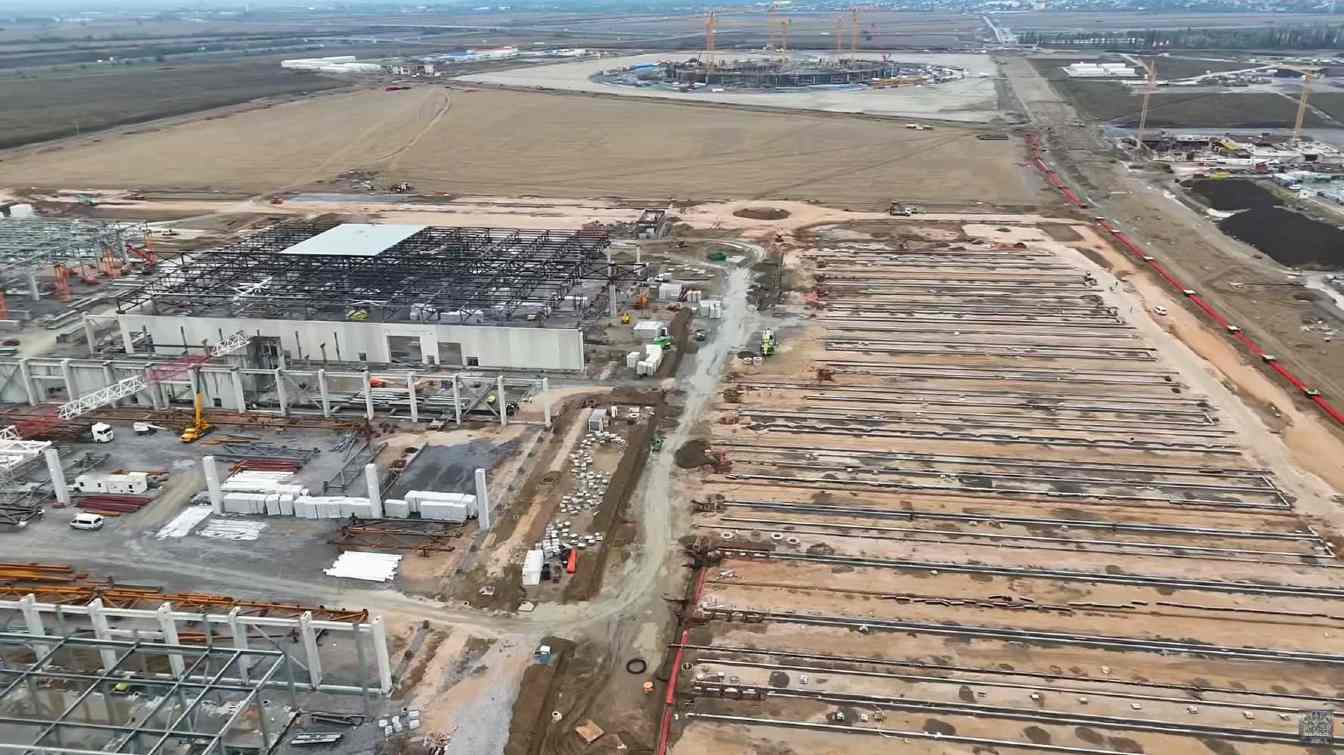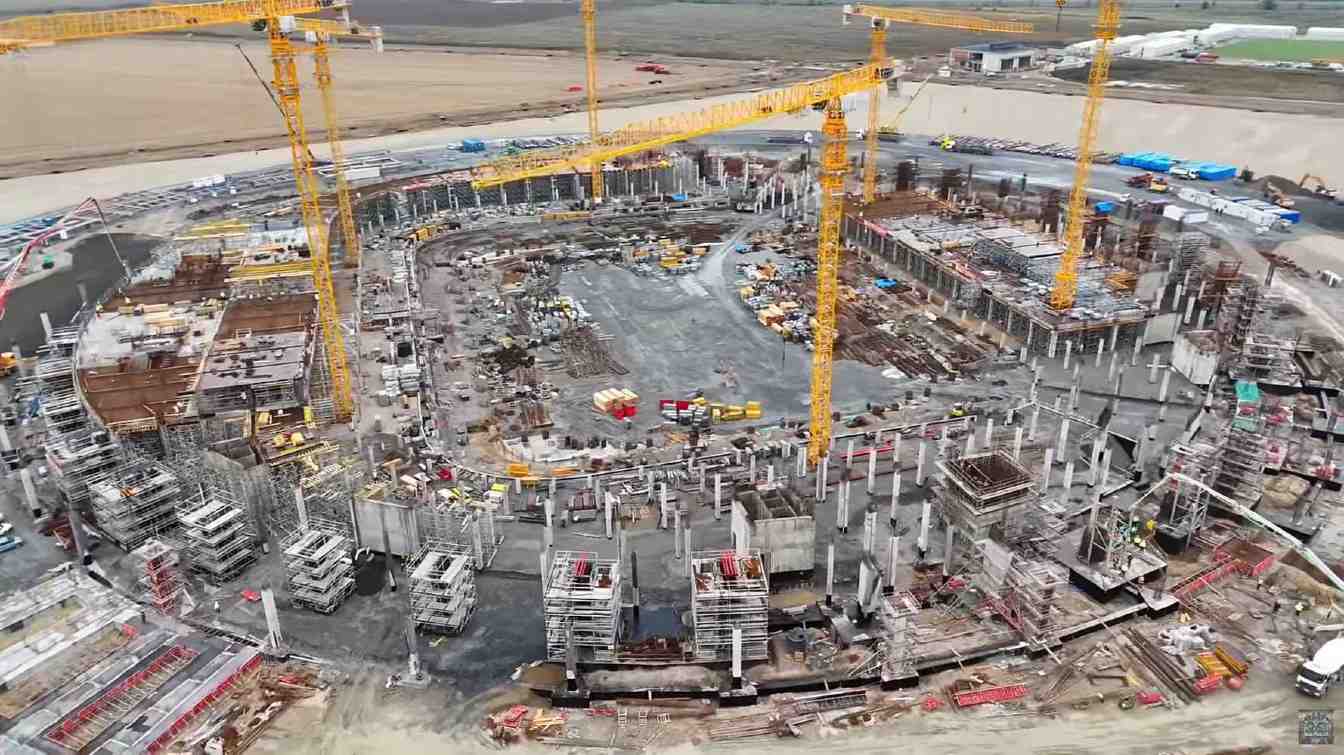Serbia: Serbia’s national stadium plan hit by rising costs and delays
source: StadiumDB.com; author: Jakub Ducki
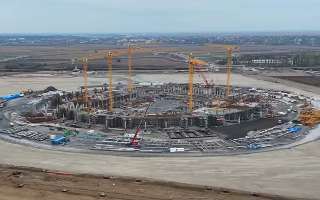 According to the Fiscal Council, the cost of Nacionalni Stadion in Belgrade has already reached €368 million, and delays will consume millions more. Is Serbia heading toward one of the biggest investment failures of recent years?
According to the Fiscal Council, the cost of Nacionalni Stadion in Belgrade has already reached €368 million, and delays will consume millions more. Is Serbia heading toward one of the biggest investment failures of recent years?
Advertisement
Monumental project full of contradictions
In Surčin near Belgrade, one of the largest investments in the history of Serbian sport is being built – Nacionalni Stadion with a capacity of 52,241 seats and a height of 51.5 meters. The nine-level structure is intended to host international events and become a source of national pride. There were even plans to hold the opening ceremony of Expo 2027 at this stadium.
The foundation stone was laid on May 1, 2024, in an atmosphere of political triumphalism. President Aleksandar Vučić assured at the time that construction would be completed by December 1, 2026. Today, it is clear that this deadline was purely propaganda. The project has stalled, delays already span several months, and they continue to grow.
Construction without permits and against regulations
The project was controversial from the start. Work began despite the lack of full administrative approvals, which violated Serbian construction law. The full building permit was issued only on September 10, 2024, after multiple rejections of earlier applications. Earlier, in August, the Ministry of Construction, Transport and Infrastructure rejected the project due to missing documentation on structural stability, safety and environmental impact.
Despite this, construction continued, causing a scandal. The Institute for Renewable Energy Sources and Environment (RERI) filed a criminal complaint against Minister of Finance Siniša Mali, accusing him of illegal concreting of the above-ground section without a permit.
The stadium is being built in an area protected for water resources. According to RERI, construction in Surčin poses a real risk of damaging drainage infrastructure and contaminating groundwater.
Numbers that make no sense
According to official data, by the end of September 2024, from the planned 18.6 billion dinars (approx. €158 million) allocated for stadium construction, only 123 million dinars – just over €1 million – had been spent. This means an almost symbolic budget implementation, and delays in financing began to paralyze construction.
At the same time, the actual cost of the project has already risen to 43.1 billion dinars (€368 million). But that is not all. The Fiscal Council warned that a one-year delay would increase costs by at least 10–15 percent. Meanwhile, even the government does not know the final projected cost.
The Budget Council estimates that including supporting infrastructure, the investment may consume up to €960 million, although the original estimate was €560 million. The entire project is financed exclusively with taxpayer money – not a single euro comes from private investment. This is unique in Europe, where public-private partnerships are the norm.
Moreover, part of the funding comes from a state loan from the Postal Savings Bank – €358 million at an interest rate of 7.6 percent. There is also no forecast of operating costs. Economic expert Aleksandar Buzija warns that the stadium’s annual maintenance costs will exceed €50 million. For comparison: London’s Olympic Stadium receives more than €1 million per week in subsidies. Can Serbia really afford such a luxury?
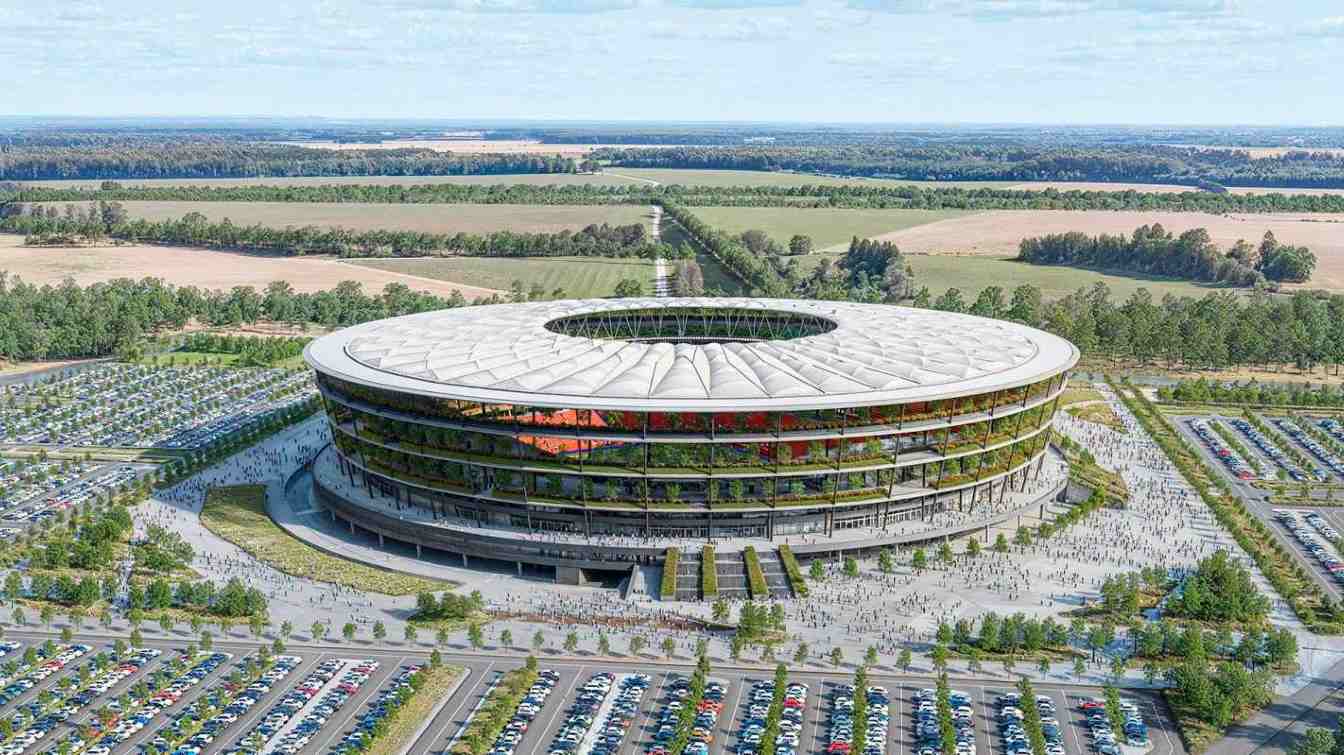 © Fenwick Iribarren Architects
© Fenwick Iribarren Architects
State insolvency and risk of company bankruptcies
At the beginning of 2025, Aleksandar Vučić officially admitted: I hope we will manage to open the National Stadium by March or April 2027. If the stadium is opened then, I will be very satisfied.
This was an admission that earlier declarations were an illusion.
The financial situation of the project is dramatic. Investment advisor Nikola Seneši says bluntly: The state has serious financial problems, there is no money for the National Stadium unless budget reserves are used, and there is no money in the loan plan. When the state does not pay its obligations, in Serbian we call it bankruptcy.
Construction companies are halting work because the government is not paying. According to Seneši, some subcontractors have already gone bankrupt and the rest are on the brink of collapse.
Experts emphasize that the stadium is not part of any development strategy. It is a political prestige project. Engineer Danijel Dašić sums it up by saying the project is detached from reality: Mathematics has never been a priority for this government.
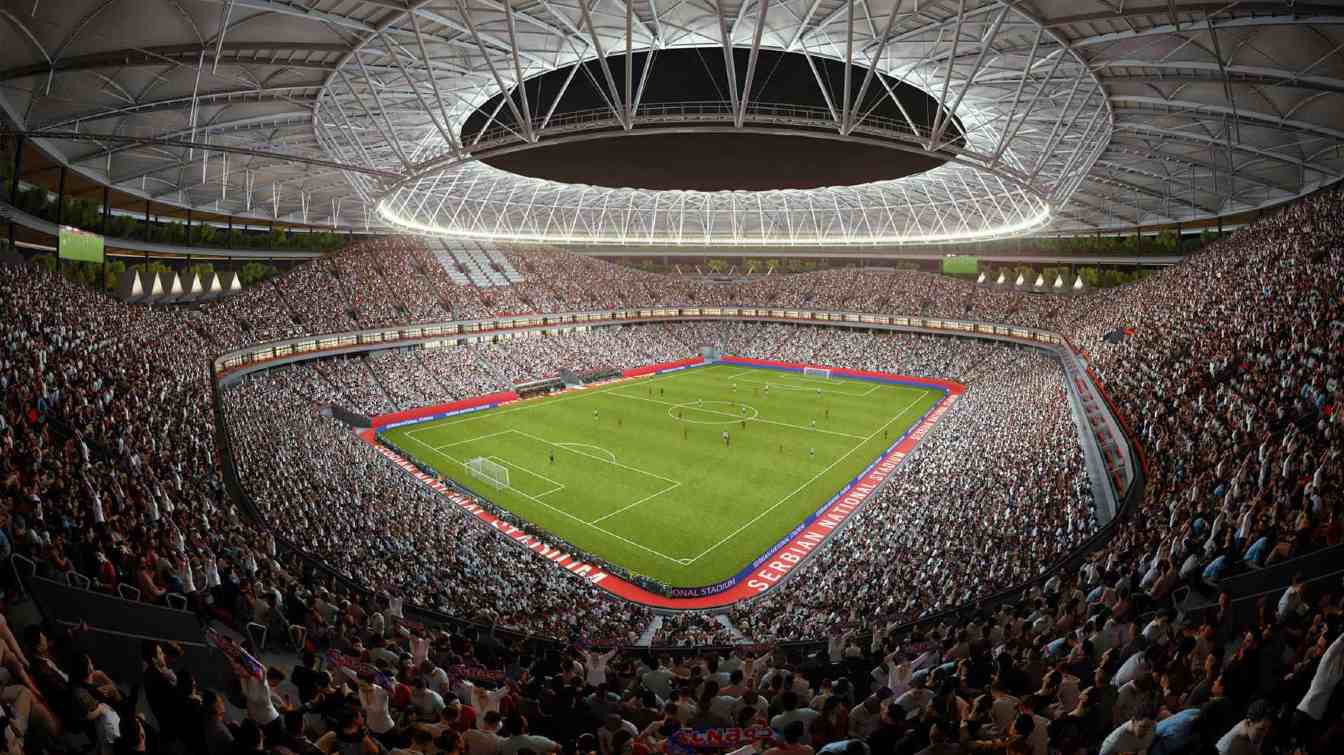 © Fenwick Iribarren Architects
© Fenwick Iribarren Architects
Advertisement

 StadiumDB
StadiumDB